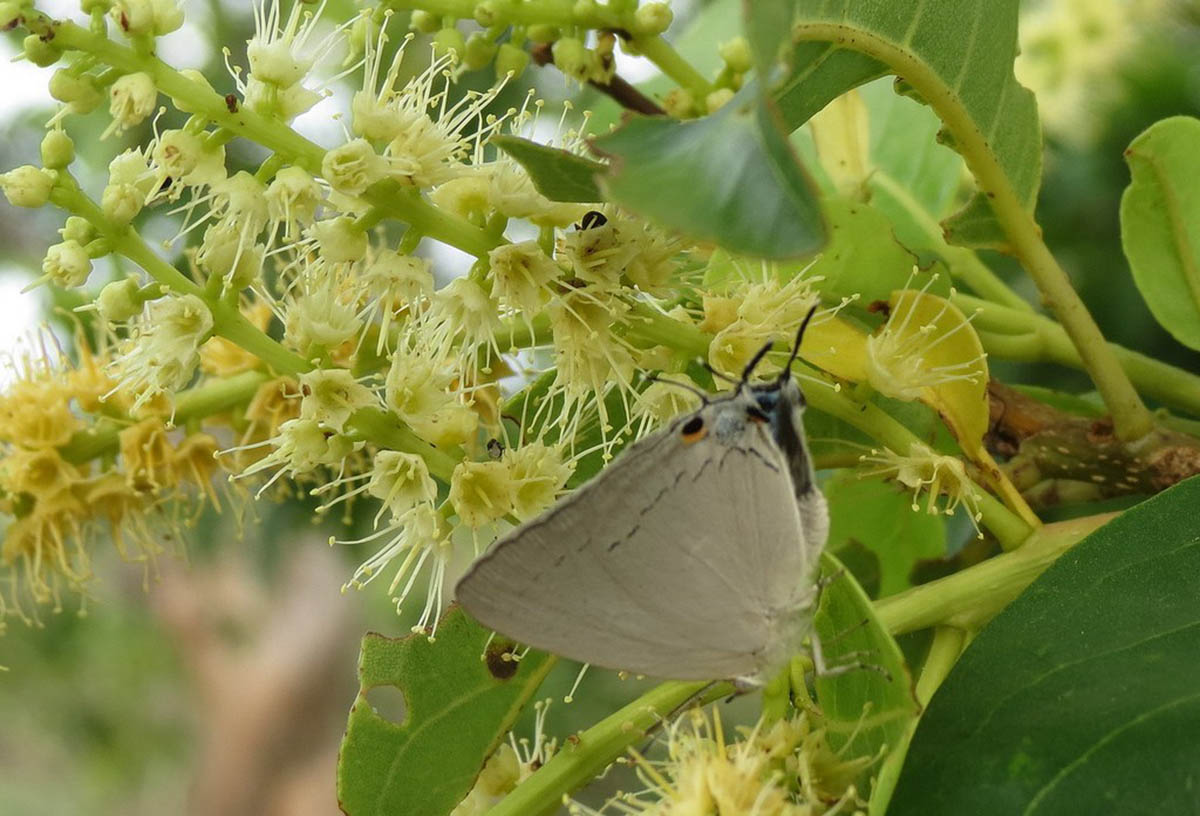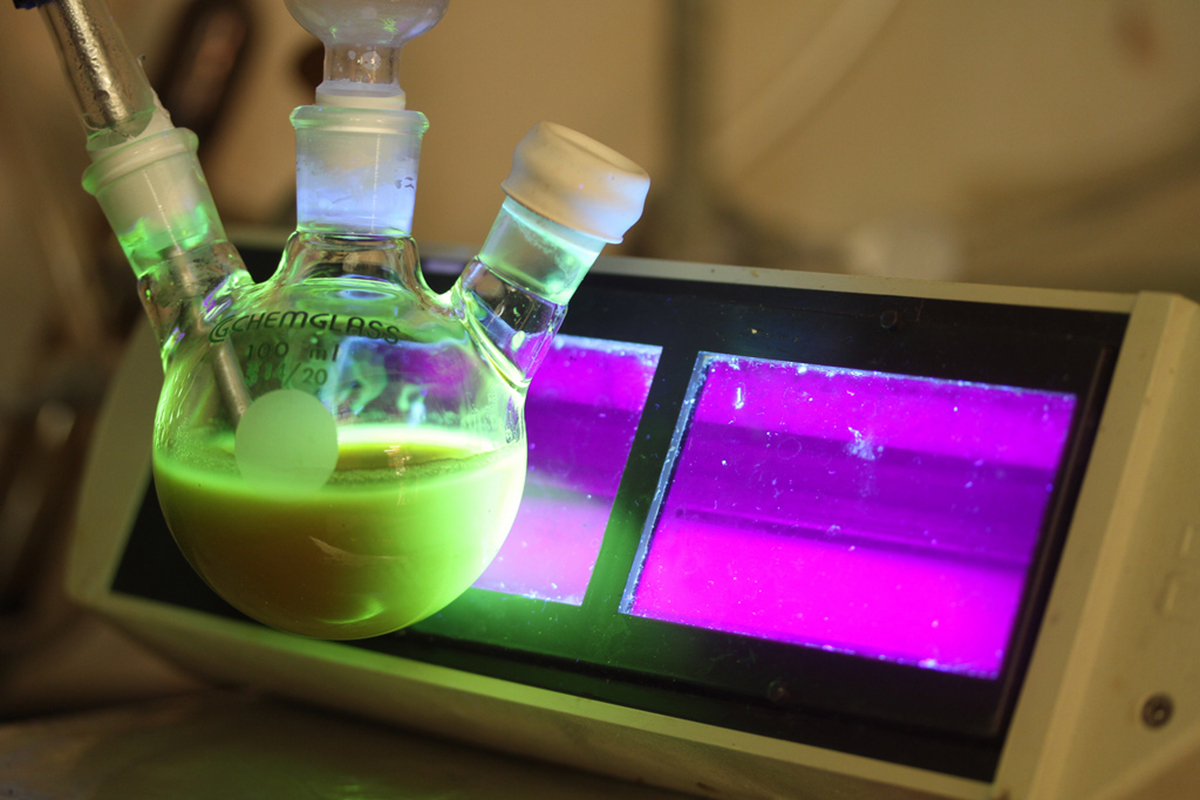Luteolin is the cancer-fighting plant chemical you have probably never heard of.
Luteolin is the antioxidant that makes some kinds of pollen yellow. It is abundant in the Ayurvedic herb chebula, also known as haritaki and by its botanical name Terminalia chebula. It is found in artichokes, broccoli, celery, green pepper, parsley, dandelion, navel oranges, carrots, green onions, apple peel, perilla leaf, chamomile tea, olive oil, peppermine, rosemary, and oregano. It is also the main ingredient in some over the counter ethical natural supplements such as Lutimax.

Luteolin is one of just two plant chemicals (the other being quercetin, which is especially abundant in apple peels, green onions, and grapefruit) that is known to suppress a chemical in the body known as platelet-activating factor, or PAF. While some activity of PAF is essential to human health, since it is an important part of the body's ability to stop bleeding, the downside of PAF is that it also triggers allergic reactions, and it can be used by certain bacteria to create a blood clot that shields them from the immune system, and it part of the tools a cancerous tumor uses to "break out" and spread to the rest of the body.
And luteolin stops the migration of cells in the linings of arteries that leads to atherosclerosis, as well as stopping one of the steps in inflammation of the brain that is associated with autism, Parkinson's disease, and Alzheimer's.
Scientists have known for years that in places where people eat lots of the vegetables that contain luteolin, there are lower rates of mesothelioma and lung, prostate, breast, ovarian, and stomach cancers. It doesn't take a lot of luteolin to make a difference. In one study, a single serving of vegetables containing luteolin and other similar plant chemicals a month was enough to a huge (nearly 50%) difference in the risk of developing mesothelioma after exposure to asbestos.
Scientists have also known that luteolin stops cancer-causing processes both inside a cell, by interacting with specific segments of DNA in the nucleus and in the mitochrondria of the cell, and by stopping certain inflammatory processes that occur on the surface of the cell. Luteolin is an antioxidant in certain anti-cancer processes, but it is a pro-oxidant in others, especially those involving the "zapping" of cancer cells by the production of tiny amounts of hydrogen peroxide.
See Also: Naturopathic Medicine for Cancer: Alternative Cancer Therapy
And that's where attempts to use luteolin as a cancer treatment have broken down. Luteolin in one dosage is an antioxidant, stopping chemical reactions that lead to the release of free radicals of oxygen inside the cell that damage DNA. And luteolin in another dosage is a pro-oxidant, generating free radicals of oxygen that kill lung cancer cells.
If you are relying on good diet or herbal medicine to provide the luteolin your body can use to fight cancer, it is hard to get the right dose for the right stage of your disease. Cancer prevention requires an antioxidant effect, and cancer treatment requires a prooxidant effect. Fortunately, Emory University scientists using nanotechnology have figured out a way to get the right dose of luteolin where it is needed.
Nanotechnology Meets Plant Medicine
The problem with using luteolin and similar plant chemicals in cancer treatment has always been that the amount of the needed chemical in the bloodstream does not necessarily match the amount of the needed chemical in the diet.

In January of 2014 Dr. Dong Moon Shin, a professor of hematology and medical oncology, and his collaborators at the Winship cancer research foundation at Emory University in Atlanta, in the United States, announced in the prestigious journal Cancer Prevention Research that they had successfully tested a new method of delivering luteolin to the cells that need it. By imbedding luteolin in a water-soluble polymer, Dr. Shin and coworkers were able to build up high levels of luteolin in the bloodstreams of laboratory animals. Moreover, the Emory University researchers found that increasing luteolin concentration in the bloodstream helped fight hard-to-treat lung and neck cancers.
This nanotechnology breakthrough may have many applications beyond the use of luteolin. Researchers at the Mayo Hospitals in Rochester, Minnesota, for example, have found that green tea polyphenols are extremely useful in treating certain kinds of leukemia. The problem with the polyphenols is that it would be necessary to drink 40 to 100 cups of green tea a day to get the right amount "naturally."
See Also: If People Made Simple Lifestyle Changes, One-Third Of Common Cancers Could Be Prevented
Even the use of green tea extracts requires taking lots of capsules to get the right dose. Similarly, curcumin is helpful in most stages of most kinds of cancer. The dosages used in clinical trials, however, range up to 8,000 mg per day, about 20 to as many as 50 capsules.
The digestive tract doesn't necessarily break down all the capsules efficiently. Some of the needed natural product is simply flushed away. This nanotechnology breakthrough, however, may make it possible for conventional medicine to use natural products in precise doses for maximum effect in the treatment of cancer. It may not be necessary to create a new drug requiring years of expensive testing. It may only be necessary to use the medicines nature has already provided in a new, smarter way.
- Johnson, Kelley, KW, Johnson, RW (May 2008). "Luteolin reduces IL-6 production in microglia by inhibiting JNK phosphorylation and activation of AP-1". Proc. Natl. Acad. Sci. U.S.A. 105 (21): 7534–9. doi:10.1073/pnas.0802865105. PMC 2396685. PMID 18490655.
- López-Lázaro M. (2009). "Distribution and biological activities of the flavonoid luteolin". Mini Rev Med Chem. 9 (1): 31–59. doi:10.2174/138955709787001712. PMID 19149659.
- Photo courtesy of Lalithamba by Flickr : www.flickr.com/photos/45835639@N04/9943937084/
- Photo courtesy of National Cancer Institute News & Public Affairs by Flickr : www.flickr.com/photos/ncimedia/8009860203/


Your thoughts on this